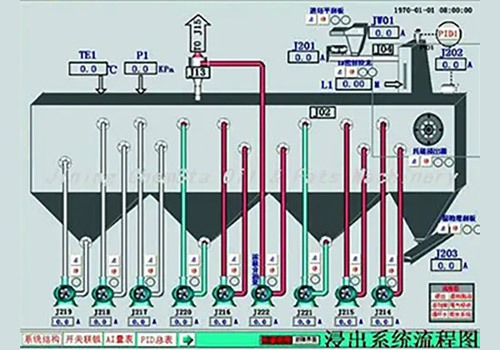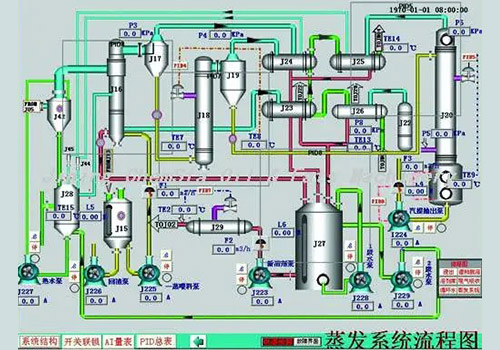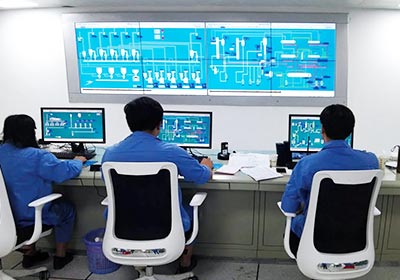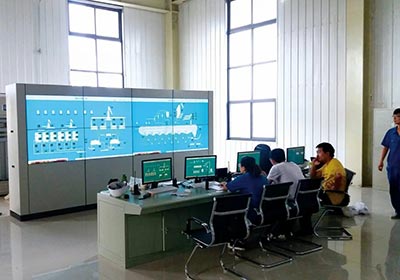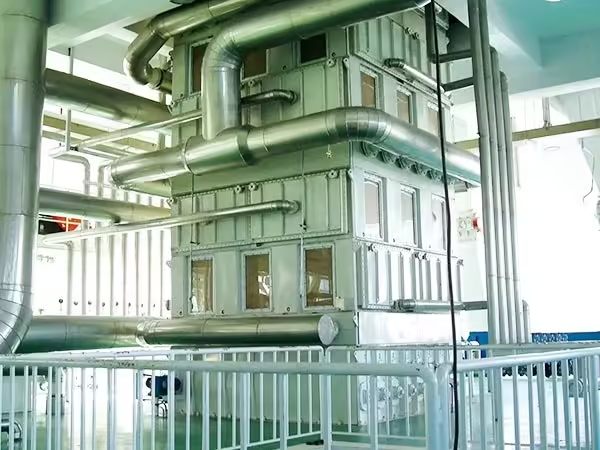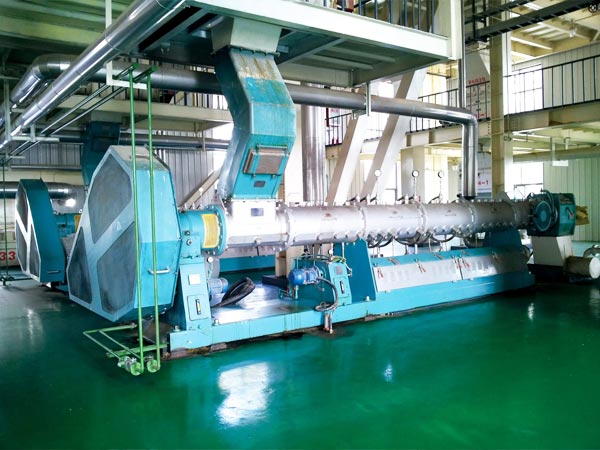Soybean
Soybean Processing Production Line(Preparation and solvent Extraction)
Soybean is a kind of high value vegetable oil seed. Through different processing technologies, soybean can be processed into soybean meal (feed grade), full-fat soybean powder, edible soybean oil, soybean white flake, soybean protein concentrate(SPC), soybean protein isolate(SPI). This page will give you a brief introduction to soybean pretreatment and solvent extraction process, you can get soybean meal and crude soybean meal through these process.
Capacity: 50-6000 t/d
Capacity: 50-6000 t/d
Preparation
1. Unloading, Cleaning, Warehousing:
Major Devices: automatic unloading machine, cleaning and classifying screen, elevator for delivering goods into silos, horizontal conveyor and conveyor for taking goods out of silos
2. Cleaning, Classifying, Removing Stones, Metering:
Major Devices: flat classifying screen, specific-gravity stoner, online meter and magnetic separator for iron removal
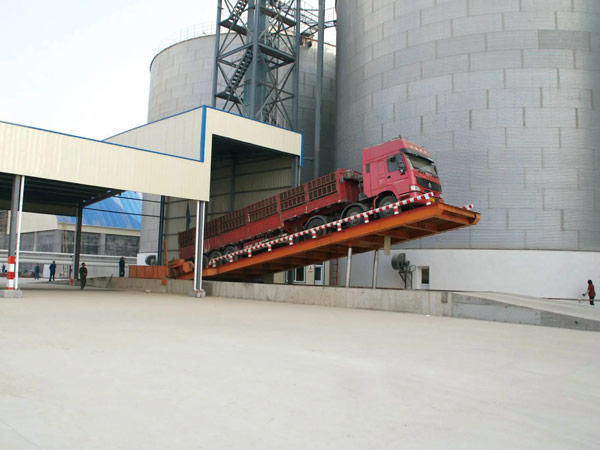
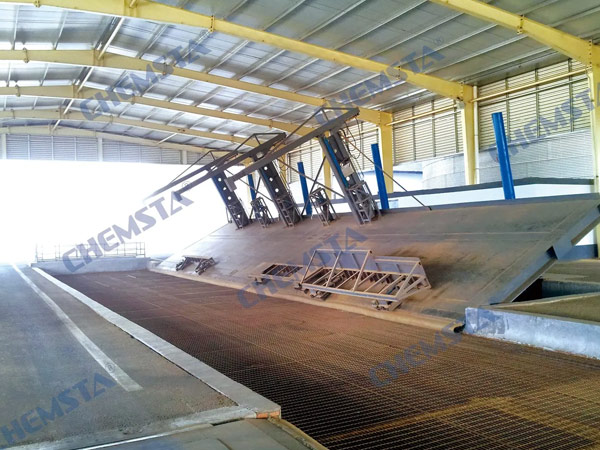
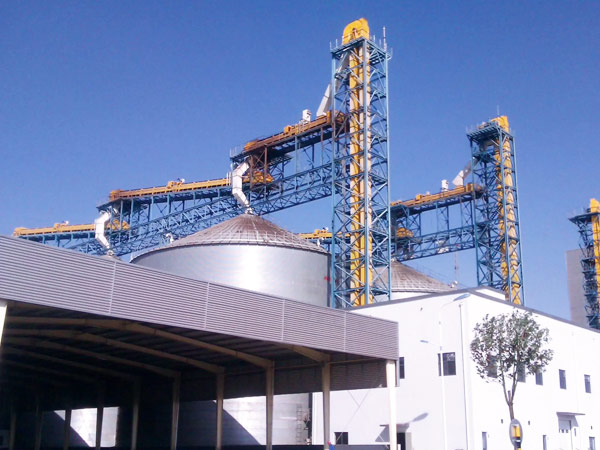
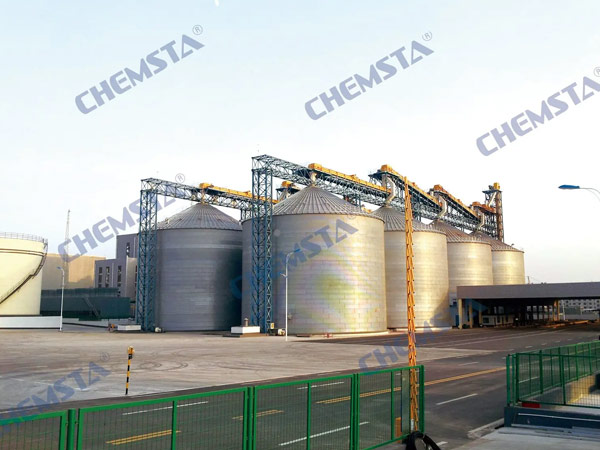
3. Drying, Crushing and Seed dehulling:
Major Devices: Vertical Seed Conditioner,Magnetic Separator for iron removal, crusher (huller) and kernel and husk separator (Aspirator)
Features of Drying and Conditioning Tower:With a modular structure, the tower is comprised of the drying and conditioning sections. It is easily assembled to accommodate various materials and production processes. Each layer of the tower is equipped with a vision glass for real time observation of the status of materials inside. Inside the tower itself, a micro-negative pressure working environment is created using scientific settings of a forced draft and induced air. By doing so, dust is prevented from leaving the tower, thus, keeping the environment cleaner.The feeding device comes with two silos, which split the feed into two streams and ensure uniform material layout. The impact imposed on the tower through material accumulation is therefore lessened. The discharging device features a frequency control to ensure a stable and uniform discharging. For safe and stable operation, it is important to keep material levels in the feeding and discharging ports in a normal range. To ensure this happens, the feeder is equipped with an alarm for control of all material levels.Designed with a high heat transfer efficiency, the stainless flat tubes used in the heating section facilitate material flow. This means that materials will come into full contact with the thermal medium, further enhancing the drying and conditioning effect. A circulating counter current hot wind is also used as heat source for full heat utilization, thus improving the drying efficiency and saving energy.
Features of the kernel and husk separator(Aspirator): The inverter-driven feeding device is able to ensure an even distribution of materials. An air lock valve is installed in the feeder to ensure normal feeding. Typically, soybeans or other seeds are thrown together from different directions, resulting in collisions. This improves the hulling efficiency. The wind and mixture of kernels and husks also are driven toward each other to ensure full contact, significantly improving the husk removal efficiency. A vision glass is also equipped on the separator for real time observation of the hulling and separating process.
Features of Drying and Conditioning Tower:With a modular structure, the tower is comprised of the drying and conditioning sections. It is easily assembled to accommodate various materials and production processes. Each layer of the tower is equipped with a vision glass for real time observation of the status of materials inside. Inside the tower itself, a micro-negative pressure working environment is created using scientific settings of a forced draft and induced air. By doing so, dust is prevented from leaving the tower, thus, keeping the environment cleaner.The feeding device comes with two silos, which split the feed into two streams and ensure uniform material layout. The impact imposed on the tower through material accumulation is therefore lessened. The discharging device features a frequency control to ensure a stable and uniform discharging. For safe and stable operation, it is important to keep material levels in the feeding and discharging ports in a normal range. To ensure this happens, the feeder is equipped with an alarm for control of all material levels.Designed with a high heat transfer efficiency, the stainless flat tubes used in the heating section facilitate material flow. This means that materials will come into full contact with the thermal medium, further enhancing the drying and conditioning effect. A circulating counter current hot wind is also used as heat source for full heat utilization, thus improving the drying efficiency and saving energy.
Features of the kernel and husk separator(Aspirator): The inverter-driven feeding device is able to ensure an even distribution of materials. An air lock valve is installed in the feeder to ensure normal feeding. Typically, soybeans or other seeds are thrown together from different directions, resulting in collisions. This improves the hulling efficiency. The wind and mixture of kernels and husks also are driven toward each other to ensure full contact, significantly improving the husk removal efficiency. A vision glass is also equipped on the separator for real time observation of the hulling and separating process.
4. Flaking:
Major Devices: automatic control box for material level, magnetic separator for iron removal, flaking mill, hydraulic driving station and conveyor
Features of the Flaking Mill:The flaking mill is user friendly and features a stable performance and easy maintenance. It is easy to set automatic control of the material level, inverter driven feeding mode, and a uniform material layout. The flaking mill is outfitted with a powerful reversible magnet, making it easy to remove impurities attached to the magnet. Flakes obtained in this mill are of equal thickness, ranging from 0.25-0.35mm.
Features of the Flaking Mill:The flaking mill is user friendly and features a stable performance and easy maintenance. It is easy to set automatic control of the material level, inverter driven feeding mode, and a uniform material layout. The flaking mill is outfitted with a powerful reversible magnet, making it easy to remove impurities attached to the magnet. Flakes obtained in this mill are of equal thickness, ranging from 0.25-0.35mm.
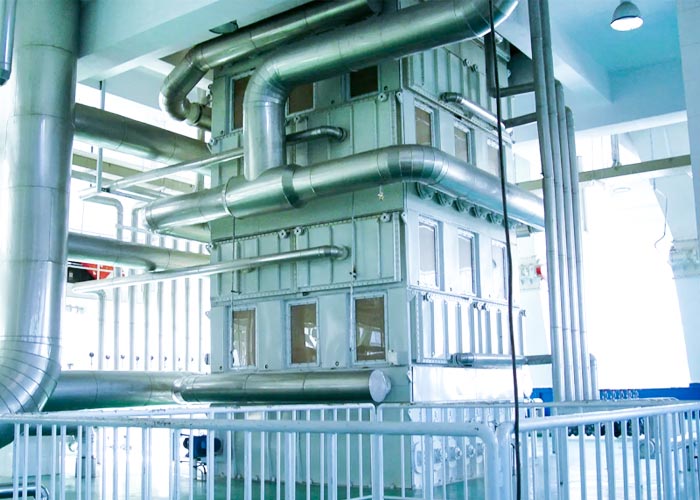
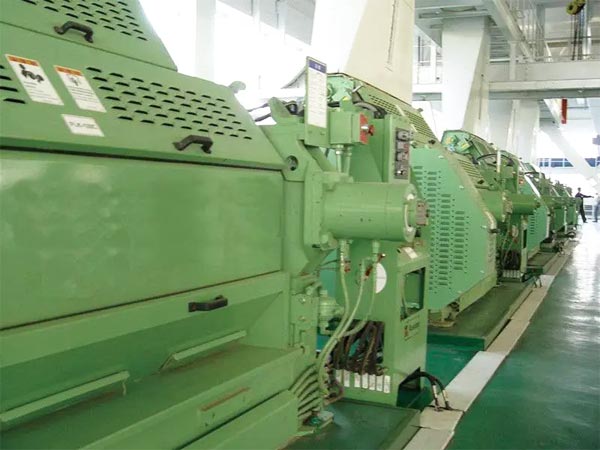
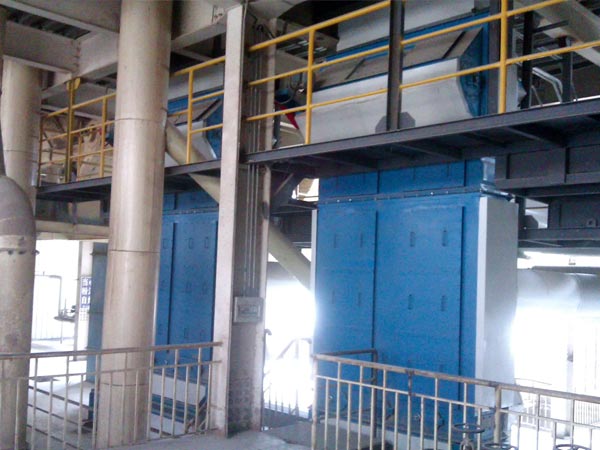
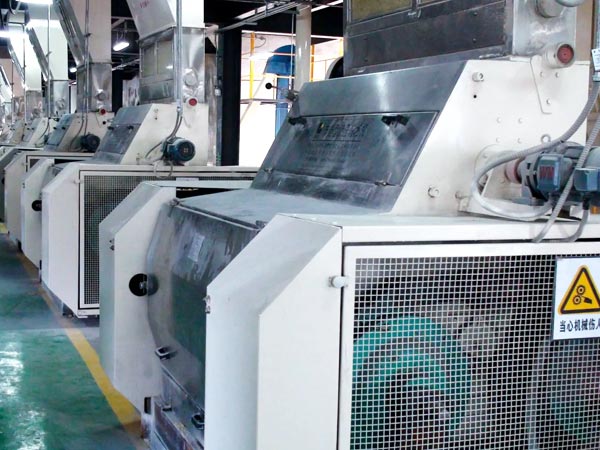
5. Extruding:
Major Devices: feeding conveyor, magnetic separator for iron removal, extruder, drying and cooling system
6. Cooling:
Major Devices: feeding conveyor, Air Lock Valve, counterflow cooler
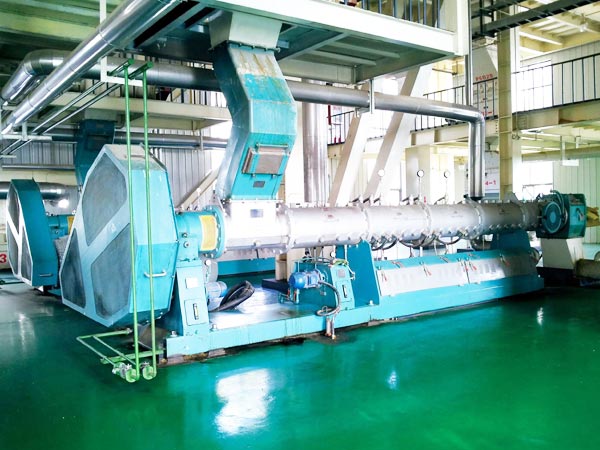
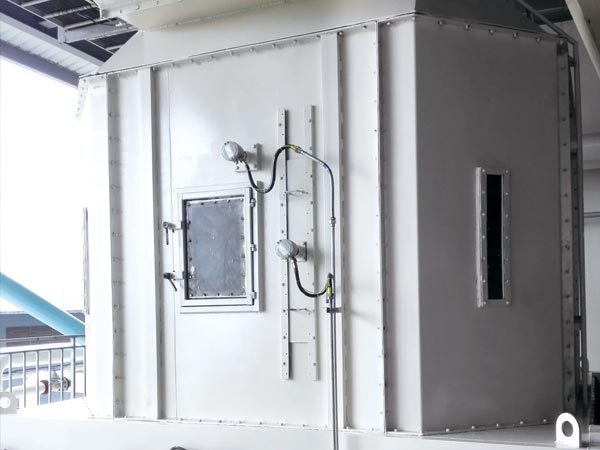
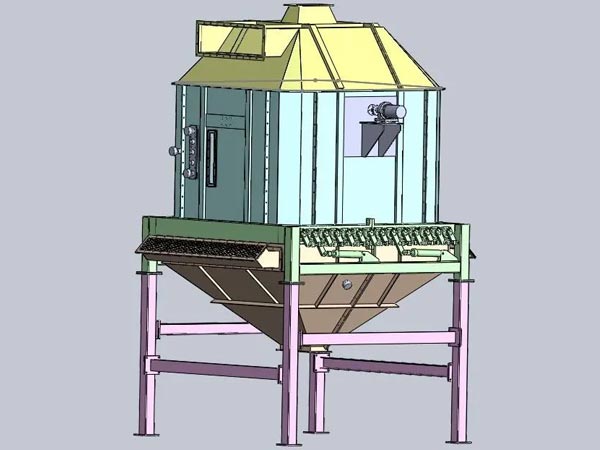
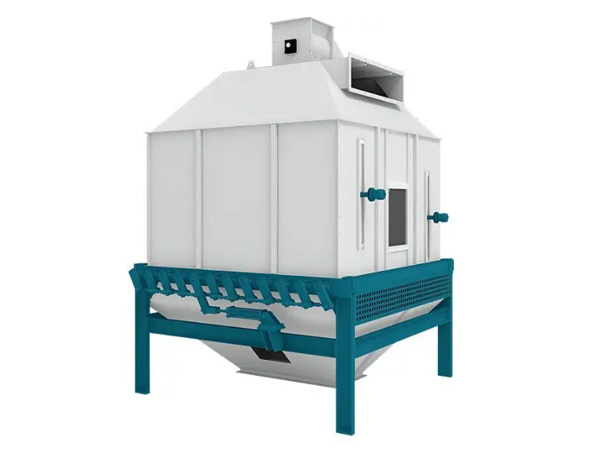
Solvent Extraction
1. Soybean Oil Extraction:
Customers can choose rotocel extractor or drag chain extractor based on their requirements. For different raw materials, the grid tray clearance and grid tray arrangement will be properly adjusted to ensure that the oil residues in the seed meal is at a minimum. In addition, liquids in the seed meal will be completely drained, contributing to a minimum solvent content. As a result, the burden on the desolventizing device in the sequential process is significantly lowered, reducing the steam consumption.
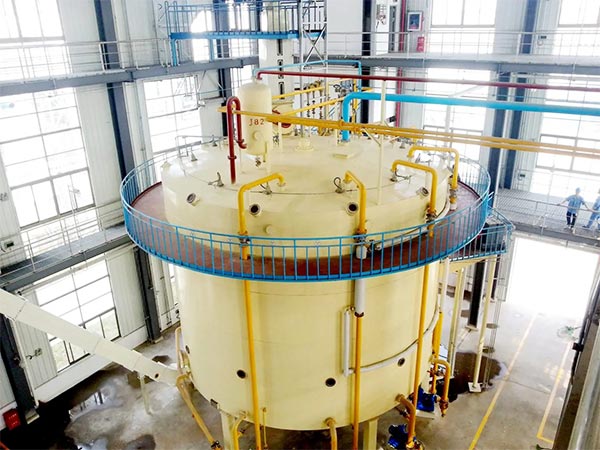
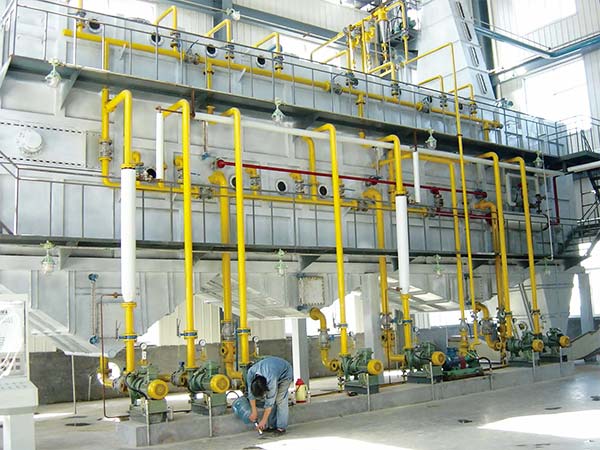
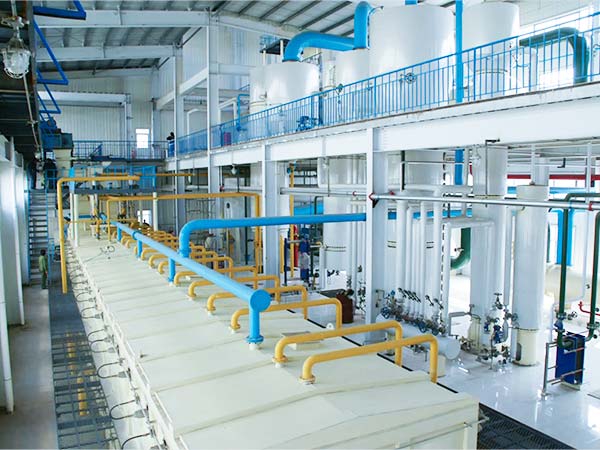
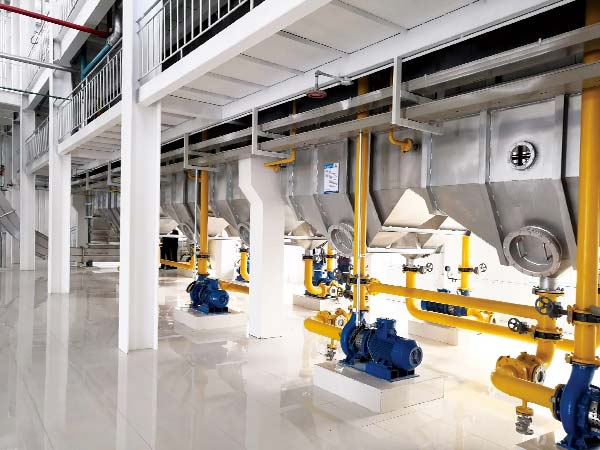
2. Meal Desolventizing:
DTDC consists of the pre-desolventizing layer, the heat exchange layer, desolventizing layer, heat recovery layer, drying layer, and the cooling layer. Material levels in each layer are automatically controlled, and the full utilization of secondary steam reduces steam consumption. Mixed steam is used to heat miscella after meal foam removal, which further saves energy The process features a thorough desolventizing, light yellow meal, complete passivation of anti-nutritional factors and requires only a short time for high temperature desolventizing and a low loss of meal NSI.
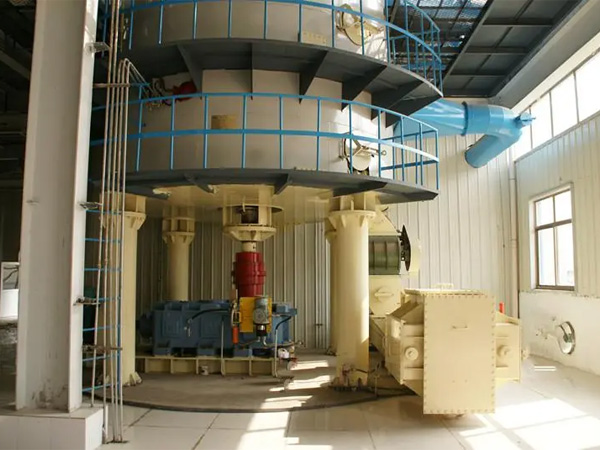
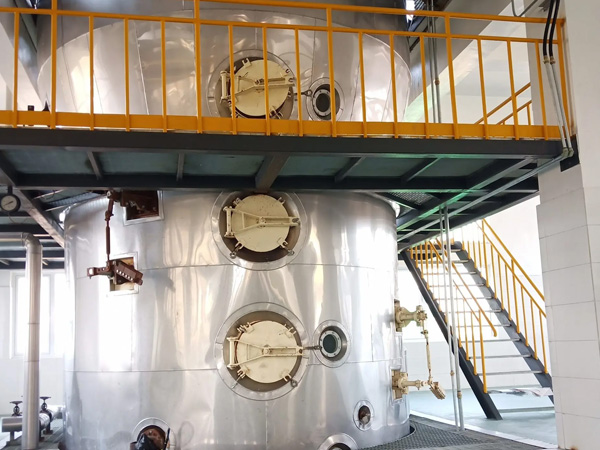
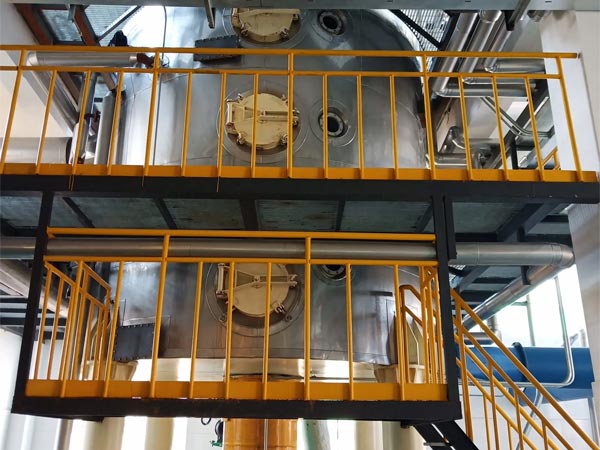
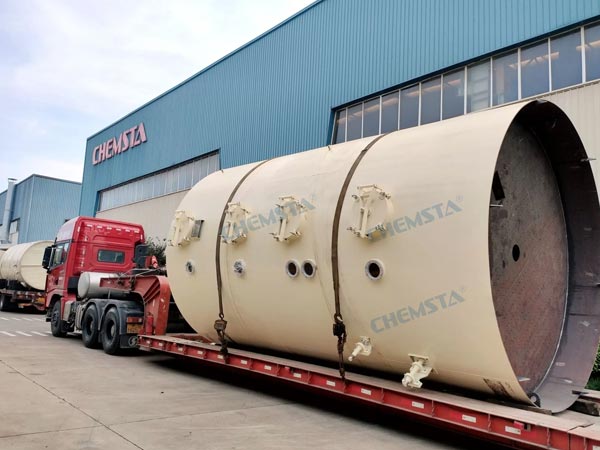
3. Oil Filtration:
Oil Filtration is designed to filter out solid impurities prior to miscella evaporation. Devices used in this process include a high pressure delivery pump, centrifugal separator, and a filter with a slagging function. The optimum filtration effect is achieved by a combination of centrifugal separation precise filtration processes. Because the filter is able to automatically remove slag, no manual operation is needed.
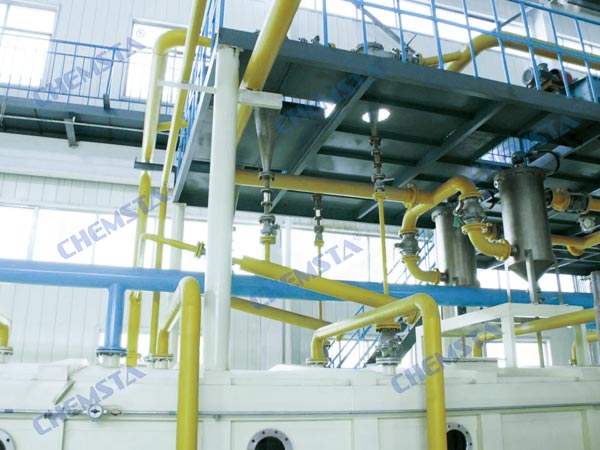
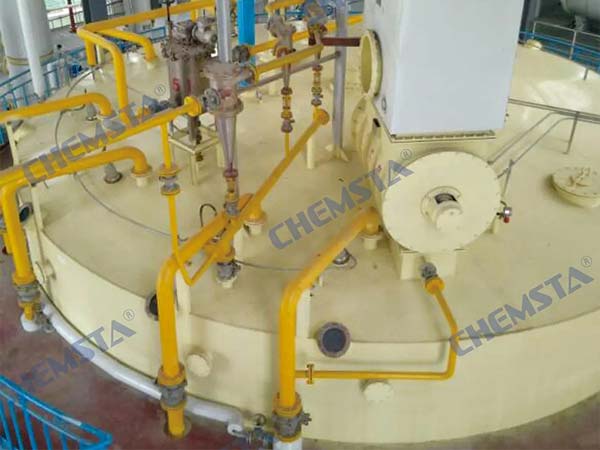
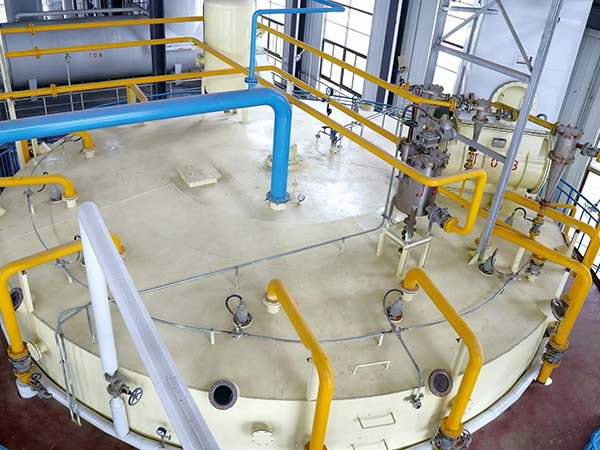
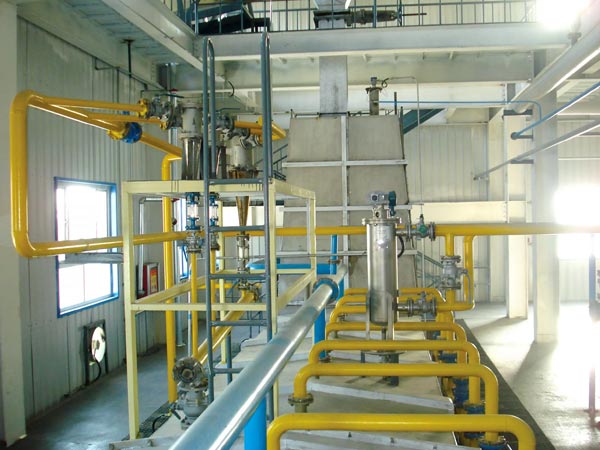
4. Evaporation System:
Equipment in evaporation system involves evaporator, disc stripping tower, flash separator, heat exchanger, and vacuum unit. Under vacuum and negative pressure condition, solvent in the miscella will be evaporated and separated by rising film evaporation and direct stripping process. After desolvation, bright color leached oil will be obtained. To ensure the system stability and reliability, an automatic PLC control system is used to control the evaporating temperature and vacuum level. Both mixed steam and power steam for the vacuum pump will be used for evaporation. Heat transfer and mass transfer between the cool and hot medium furthers reduces steam consumption, In addition, lipid oxidation can be prevented as well.
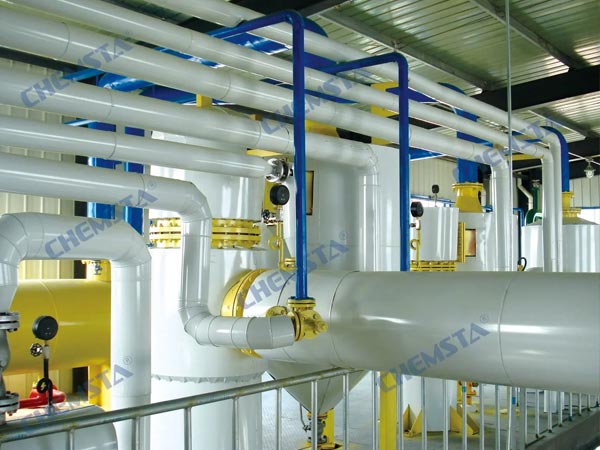
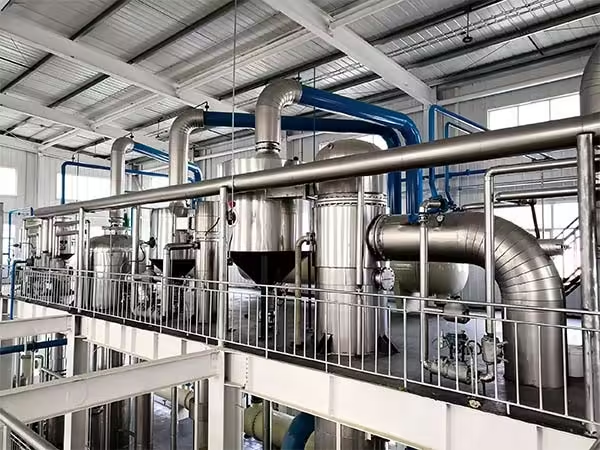
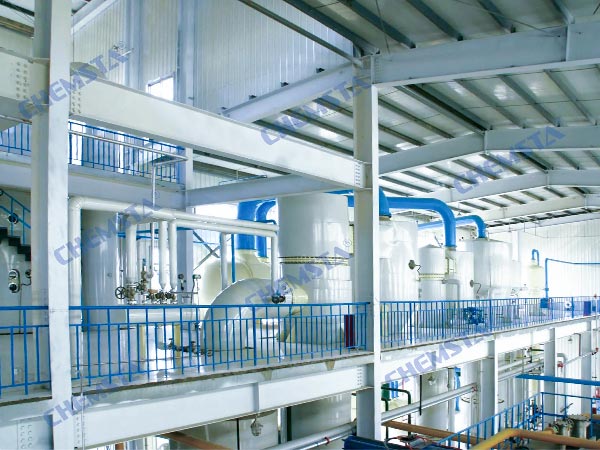
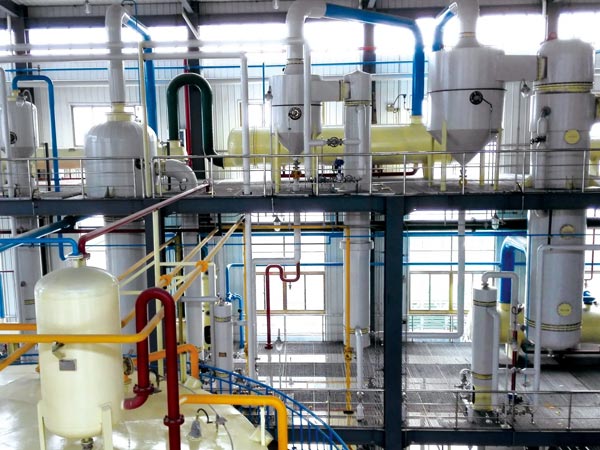
5. Solvent Condensation and Recovery System:
Solvent condensation and recovery system consists of condenser and cool water system. Under vacuum and negative pressure conditions, the condensable solvent steam is condensed into liquids for cyclic utilization through a dividing-wall heat transfer. Multiple pass structure of the condenser and proper settings of flow rate and speed of circulating water will greatly improve efficiency of the condensation and separation, while also reducing investment capital and operating costs. In addition, tube plates, baffle plates, and heat exchange tubes are all made of stainless steel S30408, which facilitates cleaning and withstands corrosion . Moreover, great condensation effect and long service life can be fully ensured.
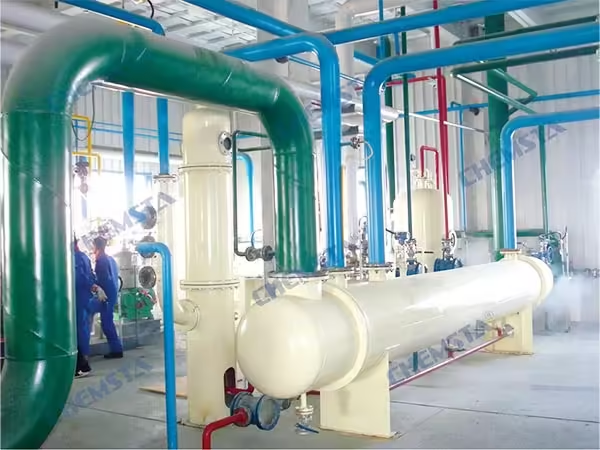
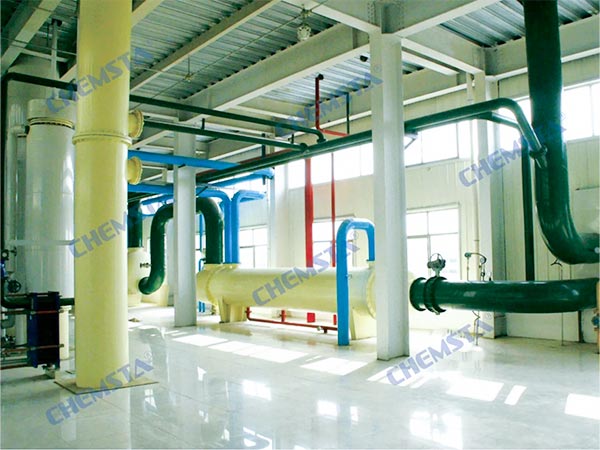
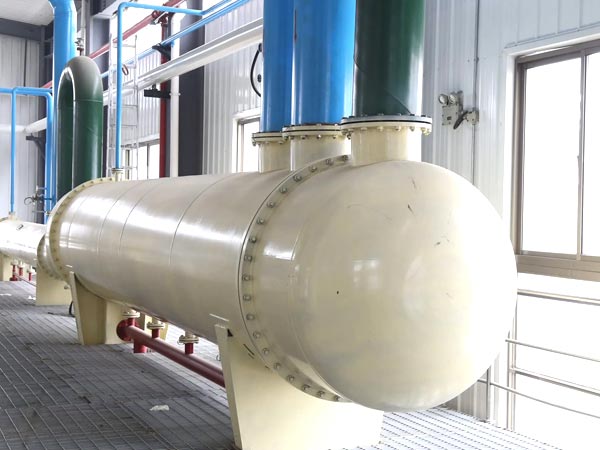
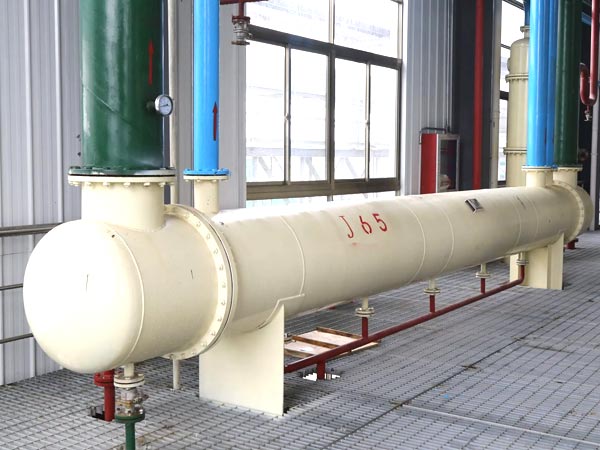
6. Paraffin Absorption System:
Paraffin absorption system consists of paraffin absorption column, paraffin desorption column, heat exchanger, storage tank, circulating pump, explosion-proof fan and fire protector. This absorption system is able to recycle more than 98% of solvent in the exhaust gas, which reduces the solvent gas loss and protects the environment. The system makes use of food-grade liquid paraffin to adsorb the solvent gas mixed in exhaust gas. Solvent steam is distilled and separated with the help of superheated steam, and the solvent steam obtained through this process will be recycled through condensation. To ensure stable absorption efficiency and system reliability, automatic controls are used to control important parameters such as flow rate, temperature and pressure.
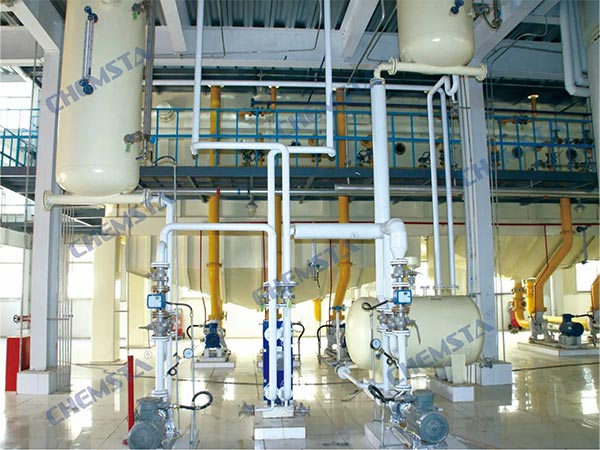
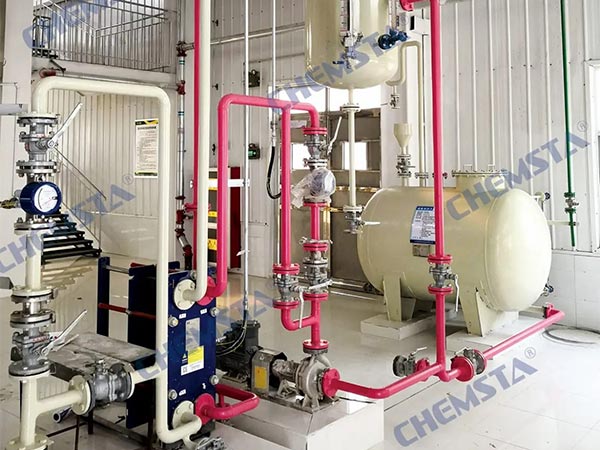
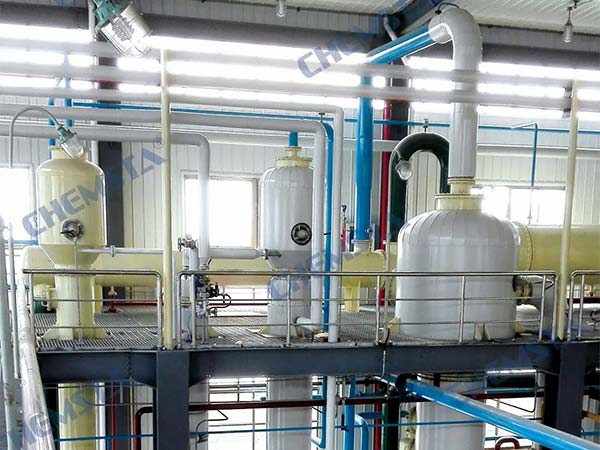
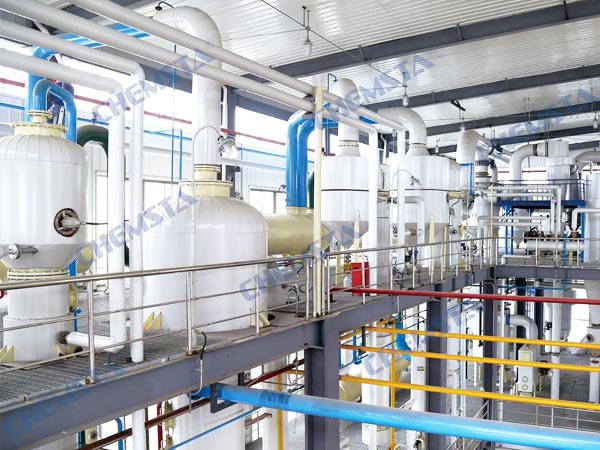
7. Water & Solvent Separation Section:
This system consists of solvent-water separator, boiling tank,and fresh solvent pump. It separates water from solvent based on the principle that water repels solvent and two liquid layers will be formed in their mixture. To ensure stability and reliability of the system, automatic control devices are applied to control important parameters such as flow rate, temperature and material level.
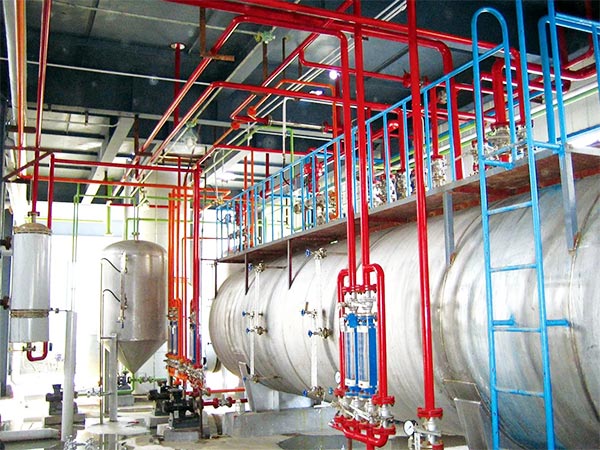
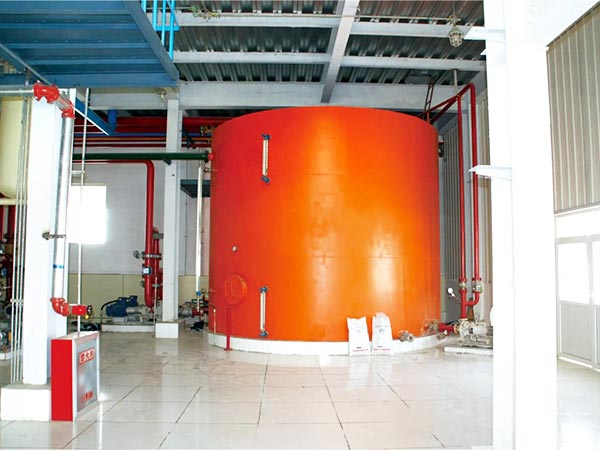
Automatic Control System
In CHEMSTA production lines, we make use of Siemens PLC control system, which is one of mainstream automatic control systems in today`s industry. The efficient, stable and advanced DCS control system consists of operation station, control station and communication network. We utilize high-speed and large-capacity S7-400 series PLC at the control system, large-screen LCD at the operation station, WINCC 7.0 industrial control software as monitoring software and PROFIBUS filed bus network for communication.
